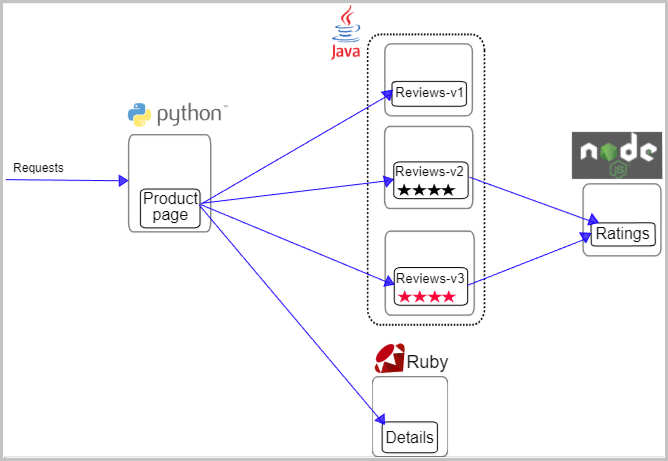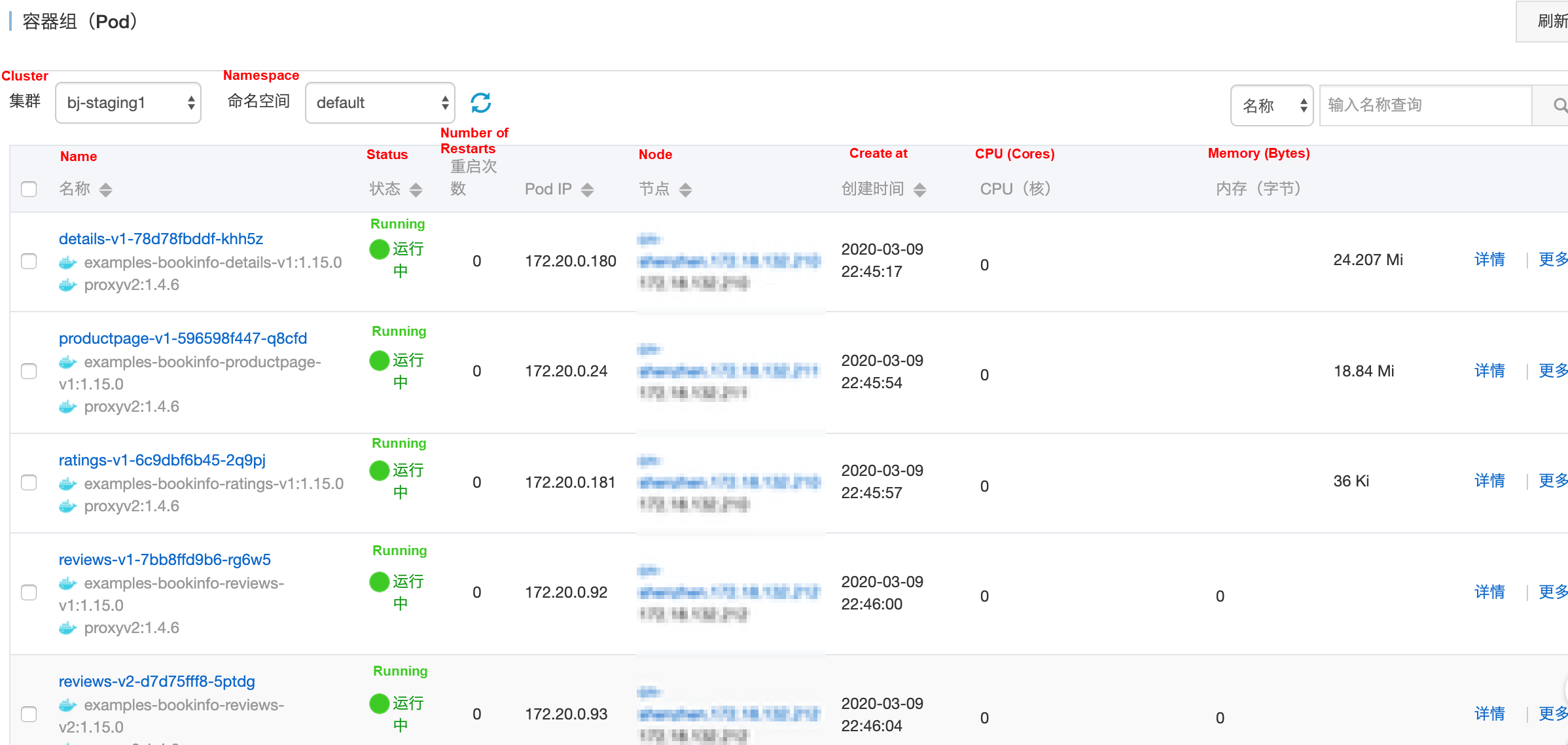By Wang Xining
This article is the fifth edition in the ASM Public Preview Series, a collection of articles that describes key capabilities of Alibaba Cloud Service Mesh (ASM). As described in the prior articles of this series, the Istio community website provides a Bookinfo example to familiarize beginners with some concepts and capabilities of the service mesh technology. Alibaba Cloud Service Mesh (ASM) also provides a quick-start tutorial about how to deploy the Bookinfo example and this article demonstrates how to deploy a sample application to a cluster on the data plane of an ASM instance. Below is the list of other articles in this series:
The sample application used in this article is a book review application named Bookinfo. The following figure shows the microservice architecture of the application.

This application consists of the following microservices:
The Reviews microservice has three versions.
kubectl label namespace default istio-injection=enabledkubectl apply -f bookinfo.yamlConsider the following stepps to view the Bookinfo deployment result:

As shown above view pod information on Bookinfo on the Pod page. For more information, click Details in the Actions column for the pod.

56 posts | 8 followers
FollowXi Ning Wang(王夕宁) - June 10, 2020
Alibaba Cloud Native - October 8, 2022
Xi Ning Wang(王夕宁) - July 1, 2021
Xi Ning Wang(王夕宁) - June 16, 2020
Xi Ning Wang(王夕宁) - July 21, 2023
Alibaba Cloud Native Community - September 20, 2023

56 posts | 8 followers
Follow Container Service for Kubernetes
Container Service for Kubernetes
Alibaba Cloud Container Service for Kubernetes is a fully managed cloud container management service that supports native Kubernetes and integrates with other Alibaba Cloud products.
Learn More ACK One
ACK One
Provides a control plane to allow users to manage Kubernetes clusters that run based on different infrastructure resources
Learn More Microservices Engine (MSE)
Microservices Engine (MSE)
MSE provides a fully managed registration and configuration center, and gateway and microservices governance capabilities.
Learn More ApsaraDB for MyBase
ApsaraDB for MyBase
ApsaraDB Dedicated Cluster provided by Alibaba Cloud is a dedicated service for managing databases on the cloud.
Learn MoreMore Posts by Xi Ning Wang(王夕宁)